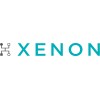An Open-Label Extension of the Study XEN496 (Ezogabine) in Children With KCNQ2-DEE (EPIK-OLE)
Epilepsy, Epilepsy in Children, Epilepsy; Seizure

About this trial
This is an interventional treatment trial for Epilepsy focused on measuring XEN496, Ezogabine, Retigabine, Encephalopathy, Seizure, KCNQ2, EPIK
Eligibility Criteria
Inclusion Criteria:
- Subject completed participation in the primary study, XPF-009-301. A subject who withdraws from the primary study due to meeting protocol-specified worsening criteria will be considered as having completed participation in the primary study.
- The caregiver is willing and able to be compliant with diary completion, visit schedule, and study drug administration.
- Subject's caregiver achieved a minimum of 85% compliance with daily diary completion during both baseline and the double-blind period of the primary study.
Exclusion Criteria:
- Any adverse event(s) or serious adverse event(s) during the primary study XPF-009-301, which in the opinion of the investigator and sponsor's medical monitor, would preclude the subject's entry into the OLE study.
- A clinically significant condition or illness, or symptoms other than those resulting from KCNQ2-DEE, present at screening/baseline that, in the opinion of the investigator, would pose a risk to the subject if s/he were to enter the study.
- Any conditions that were specified as exclusion criteria in the primary study, XPF-009-301.
- It is anticipated that the subject will require treatment with at least 1 of the disallowed medications during the study.
- Any change in cardiac rhythm or atrioventricular conduction in the primary study that, in the investigator's opinion, is a significant risk to subject safety.
Sites / Locations
- Children's Hospital of Philadelphia
- MultiCare Health System - Mary Bridge Pediatrics - Tacoma
- Sydney Children's Hospital
- Universitair Ziekenhuis Antwerpen - Dienst Kinderneurologie
Arms of the Study
Arm 1
Arm 2
Experimental
Experimental
Stage 1: Blinded Dose Transition/Titration
Stage 2: Open-Label Treatment
24-day blinded transition/titration period. Subjects who received XEN496 in the preceding study will continue to receive XEN496 at the same dose, in a blinded manner, without any further titration. Subjects, who were allocated to placebo in the preceding study, will be titrated to a tolerated dose up to a maximum dose of 21 mg/kg/day, with a maximum daily dose of 672 mg/day. To maintain the blinded aspect of the study, placebo will be dispensed to all subjects during the transition/titration period to ensure the total number of capsules are consistent across all subjects. Subjects who discontinue will be required to taper off study drug over a period of up to 15 days
Optimally-tolerated dose level established during the transition/titration period will be maintained throughout the duration of open-label period unless dose adjustment is required. Subjects who discontinue or complete the study treatment will be required to taper off study drug over a period of up to 15 days.
Outcomes
Primary Outcome Measures
Secondary Outcome Measures
Full Information
1. Study Identification
2. Study Status
3. Sponsor/Collaborators
4. Oversight
5. Study Description
6. Conditions and Keywords
7. Study Design
8. Arms, Groups, and Interventions
10. Eligibility
12. IPD Sharing Statement
Learn more about this trial
